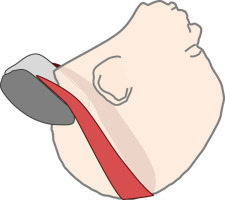Journal of the Mechanical Behavior of Biomedical Materials ( IF 3.9 ) Pub Date : 2017-12-30 , DOI: 10.1016/j.jmbbm.2017.12.025 Paige V. Tracy , Alan S. Wineman , Francisco J. Orejuela , Susan M. Ramin , John O.L. DeLancey , James A. Ashton-Miller

|
Remarkable changes must occur in the pelvic floor muscles and tissues comprising the birth canal to allow vaginal delivery. Despite these preparatory adaptations, approximately 13% of women who deliver vaginally for the first time (nulliparas) sustain tears near the origin of the pubovisceral muscle (PVM) which can result in pelvic organ prolapse later in life. To investigate why these tears occur, it is necessary to quantify the viscoelastic behavior of the term pregnant human birth canal. The goal of this study was to quantify the in vivo material properties of the human birth canal, in situ, during the first stage of labor and compare them to published animal data. The results show that pregnant human, ovine and squirrel monkey birth canal tissue can be characterized by the same set of constitutive relations; the interspecies differences were primarily explained by the long time constant, τ2, with its values of 555 s, 1110 s, and 2777 s, respectively. Quantification of these viscoelastic properties should allow for improved accuracy of computer models aimed at understanding birth-related injuries.
中文翻译:

本构模型描述分娩第一阶段下产道组织的体内材料特性
骨盆底肌肉和组成产道的组织必须发生显着变化,才能进行阴道分娩。尽管有这些准备性的适应措施,但约有13%的首次阴道分娩的妇女(鼻旁沟)在耻骨内脏肌肉(PVM)的根部附近流泪,这可能导致盆腔器官在以后的生活中脱垂。为了研究为什么会产生这些眼泪,有必要对术语“孕妇的产道”的粘弹性行为进行量化。这项研究的目的是在原位定量人类产道的体内物质特性,在分娩的第一阶段将其与已发布的动物数据进行比较。结果表明,怀孕的人类,绵羊和松鼠的产道组织可以通过同一组本构关系来表征。种间差异主要是由长的时间常数所解释的,τ 2,具有555个S,1110 s和2777个S,分别其值。这些粘弹性的量化应允许提高旨在了解与出生有关的伤害的计算机模型的准确性。



























 京公网安备 11010802027423号
京公网安备 11010802027423号